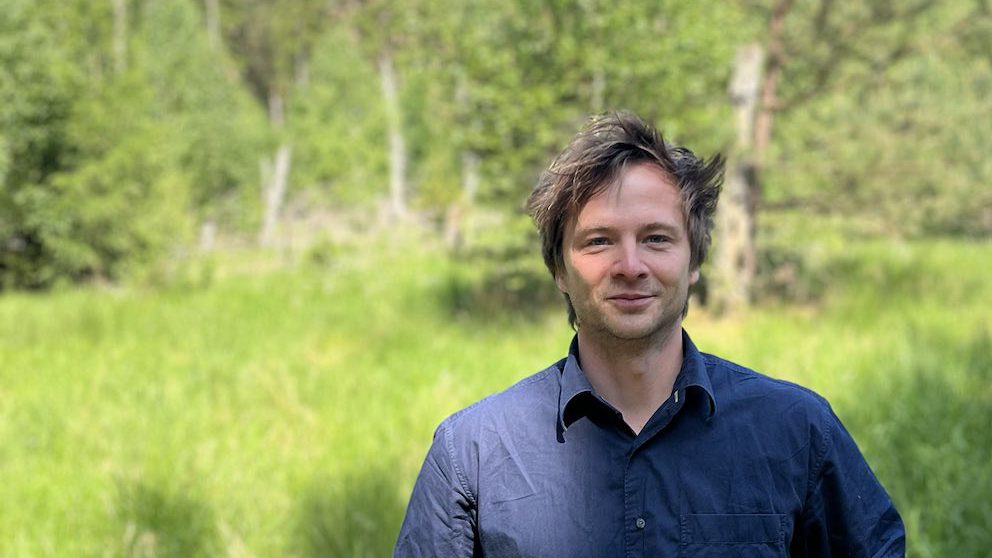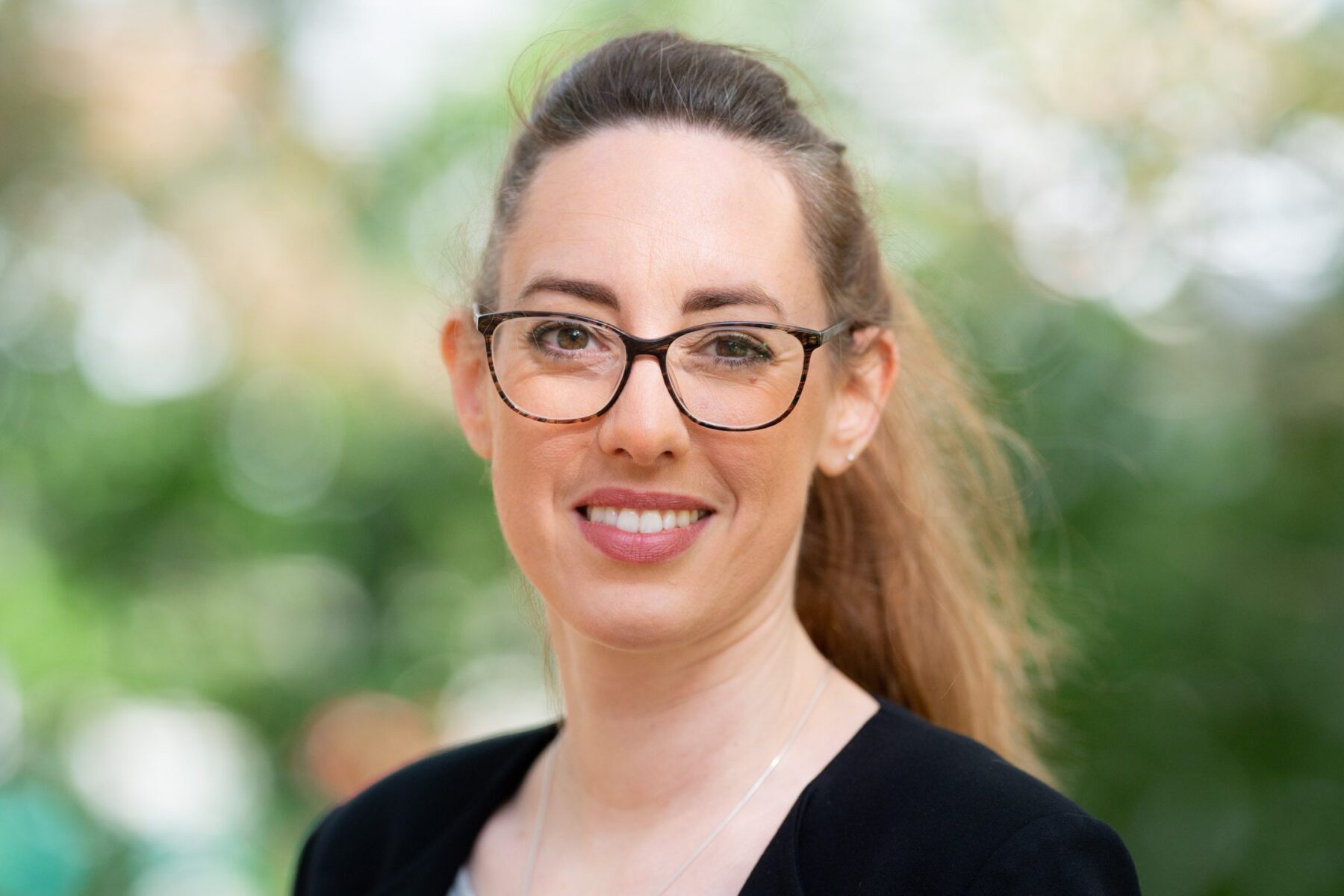
A Positive Contribution to the Environment – Dr Hannes Hinneburg Creates Sustainable Materials from Fungal Mycelium
At the Fraunhofer Institute for Applied Polymer Research IAP in Potsdam Science Park, Dr Hannes Hinneburg is developing sustainable materials from fungal mycelium. In future, his work could change the markets for leather, textiles and insulation materials.
Asked why he chose to work at the Fraunhofer Institute for Applied Polymer Research IAP, Dr Hannes Hinneburg explains that he wanted to switch from basic research to a practical and application-oriented working environment. In addition, the Fraunhofer IAP offered him the opportunity to combine his passion for growing fungi with the development of new, sustainable materials and products. Moving things forward matters to him: At the annual Potsdam »CITY CYCLING«, the passionate cyclist is a valuable member of the Fraunhofer IAP and Potsdam Science Park teams. Soon, his scientific work may also allow him to make his mark on industry: Hannes Hinneburg develops sustainable materials – from fungi.
Composites from Fungal Mycelium
However, he is not concerned with what we commonly refer to as a »mushroom«, the fruiting body consisting of a stalk and the cap sitting on top, which many fungi grow. Hinneburg is interested in the underlying, root-like, and often hidden network of threads, the so-called mycelium. It penetrates its surroundings, clutches nutrients, and explores the adjacent environment piece by piece. Based on such mycelia, Hinneburg develops new kinds of materials which, in the future, could be used, for example, in insulation or textile production.
What sounds unusual at first is, as the young scientist assures, quite simple: »It doesn’t take much to grow fungal mycelium. Ultimately, all you need is the right substrate for the respective fungal species, a nutrient on or in which it can live and thrive«. Hinneburg himself works with different species of tree fungi and a nutrient medium made of sawdust or wood chips. As he explains, in a first step, all he needs is a small fungal culture, such as in a cob, to start with basic cultivation. Later, Hinneburg transfers his mycelia into larger containers, which are then stored in climate cabinets. Thus, when it comes to produce materials from mycelium, one of the more important virtues is: patience. »Under the right conditions, a mycelial mesh grows within two to three weeks«, Hinneburg says. During this time, the fungus fuses with its substrate to form a new composite. In this process, the mycelium functions like a slow-setting biological glue that holds the new material together.
From Packaging Material to Sustainable Fashion
According to Hannes Hinneburg, another great advantage of fungal mycelium is its versatility. From voluminous blocks that can be used as insulation material to thin, textile-like layers, anything appears to be possible. Fittingly, Hinneburg cooperates with a wide range of business partners. With the Institute for Food and Environmental Research and Agro Saarmund e. G., he creates sustainable packaging materials, using nothing but his tree fungi and leftover and raw materials from local agriculture and forestry (such as wood, straw, or green cuttings). Additionally, the Fraunhofer IAP researcher provides a Berlin-based designer with the raw material for a range of animal-free alternatives to common leather products, such as bags, wallets, or gloves.
In Search of the Right Parameters
As Hinneburg puts it, the real challenge starts when it comes to producing composites with very specific properties, such as durability or flexibility. He gives an example from the world of fashion: »To produce an animal-free version of leather shoes, for example, you need a very strong, hard-wearing, and waterproof material. So far, it has proven quite difficult to replicate these properties with mycelium composites. This is where you start experimenting«. First, as Hinneburg explains, one has to find the right combination of fungus and substrate. After that, it becomes a matter of providing the mycelium with the conditions it needs so that the future composite will develop the desired properties. To achieve this, Hinneburg varies the parameters to which he exposes his fungi, such as temperature, humidity or even the amount of oxygen.
When it comes to his business collaborations, what matters most to him is to secure that the materials he develops remain sustainable. »In fact, mycelium-based composites could already offer some of the desired properties as of today. However, to achieve this, we would have to use certain chemical aids. The basic idea of providing a one hundred percent sustainable material that is biodegradable and protects the environment would be lost.« Hannes Hinneburg wants to prevent that. He prefers to look for the fitting combination of fungus, substrate and parameters in order to create the right composite for the right purpose. »I definitely want to introduce these materials to the market«, he affirms: »It is about time that we see significantly more products entering the market that contribute positively to our environment. Fungal materials possess a high potential in this regard«.
Optimal Conditions for Cutting-Edge Research Start-ups
Now, Hinneburg is still considering whether he will transfer his research into a start-up. However, he emphasizes the favorable conditions that the Potsdam Science Park would offer him in such a scenario: »The Science Park offers research-related start-ups the opportunity to start small and grow naturally if, for example, their need for laboratory space increases«. Until then, Hinneburg intends to continue his research, improve his materials, and develop ways to automate the cultivation of mycelia. In the meantime, he will probably let some more of them grow in peace. Will he also find enough free time to participate in the next Potsdam »CITY CYCLING« again? His colleagues at the Potsdam Science Park surely would be happy to have him on their team this year. Hannes Hinneburg also seems confident that he will continue to find time for such activities in the future. Ultimately, he explains, when it comes to developing a product, it all boils down to one thing: patience.
This blog and the projects carried out by Standortmanagement Golm GmbH at Potsdam Science Park are funded by the European Regional Development Fund (ERDF) and the Federal State of Brandenburg.
Contact

Karen Esser
PR & Communications
karen.esser@potsdam-sciencepark.de + 49 331 237 351 103